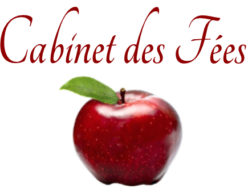 This issue of Scheherezade’s Bequest, with its companion updates from Cabinet des Fées, is being brought to you live from Deux-Sevrés, a place saturated in folklore and fairy tales. Situated in the Poitou-Charentes region of France, where the landscape alternates between agricultural patchworks and forested hills, Deux-Sevrés is home to the the 16th-century château d’Oiron (pictured below), where Charles Perrault based his story “Le Chat Botte” (Puss in Boots). Mêlusine, a European spirit of springs and rivers, created the city of Parthenay (located in the center of Deux-Sèvres) with a wave of her fairy wand. From the looks of this place, I’d say there are quite a lot of spirits still hard at work around here. The region also hosts the Angoulême Folklore Festival, where performers from all over the world gather to celebrate the traditions of their homelands amidst a bounty of wine and cheese.
This issue of Scheherezade’s Bequest, with its companion updates from Cabinet des Fées, is being brought to you live from Deux-Sevrés, a place saturated in folklore and fairy tales. Situated in the Poitou-Charentes region of France, where the landscape alternates between agricultural patchworks and forested hills, Deux-Sevrés is home to the the 16th-century château d’Oiron (pictured below), where Charles Perrault based his story “Le Chat Botte” (Puss in Boots). Mêlusine, a European spirit of springs and rivers, created the city of Parthenay (located in the center of Deux-Sèvres) with a wave of her fairy wand. From the looks of this place, I’d say there are quite a lot of spirits still hard at work around here. The region also hosts the Angoulême Folklore Festival, where performers from all over the world gather to celebrate the traditions of their homelands amidst a bounty of wine and cheese.

It is with a celebratory spirit that we bring you this issue of Scheherezade’s Bequest — it is our 13th issue after all, and thirteen is a number of some import to fairy tales. In the Grimm’s version of Sleeping Beauty, it is the thirteenth fairy who curses the child Beauty after failing to receive an invitation to her christening. In another of the Grimm’s tales, The Twelve Brothers, it is the thirteenth child, the princess, who both seals her brothers’ fates and saves them from it. In the thirteenth issue of Scheherezade’s Bequest, trickster fairies come out in force. Mêlusine herself could be considered a trickster of sorts — you just know that when you tell someone not to do something, that’s the first thing they’re going to do. That’s trickery at its finest. The cover art we’ve chosen for this issue is called “Fighting Fairies II”, and we think it perfectly exemplifies the tricksy-ness of number 13, which contains 13 poems and stories we know will delight you.
In this issue you’ll find work by Megan Arkenberg, Julia August, C.S.E. Cooney, Caroline C. Duda, Caspian Gray, Shweta Narayan, Helen Ogden, Caitlyn Paxson, Marta Pelrine-Bacon (whose story includes original art and an artist statement by the author), S. Brackett Robertson, Alexandra Seidel, Robert E. Stutts and Bruce Woods. The table of contents is in its usual place in the sidebar; read and enjoy the fiction and poetry at your convenience.
The cover of number 13, “Fighting Fairies II”, is by Kirsty Greenwood, an artist whose passion for Guns & Roses is only rivaled by her love of fairy tales and folklore. Kirsty has this to say about this piece:
The image is made up of several elements layered, one being a drawing of a group of armed Faeries (titled ‘Jealousy’) wielding weapons, ready for a fight, the next a portrait of myself hiding amongst ivy clad trees next to a river I frequent and the next more drawing over the top of the combined previous layers, as a black and white photograph on vintage silver photograph paper. It was then tweaked in Photoshop to change the colour to more sepia tones.
For me this picture is about fighting your inner daemons, being lost amongst one’s own obsessions and ensuing madness; a basis for many Folk and Fairy tales. With a feeling of the macabre, it conveys my need to seek the multi-layered realities of Myths and Legends.
We’ll be hearing more from Kirsty about her art in the near future, but right now we at CdF would like to offer congratulations to three of our authors whose fiction and poetry received honorable mentions in the Best Horror of the Year, Volume 3, edited by Ellen Datlow: Helen Ogden, for her poem “Blackberries”; Catherine Knutsson, for her story “Lily”; Kim Kofmel, for her story “Crossroads”; and Rebecca W. Day, for her story “Bricks”. All of these works appeared in Cabinet des Fées Volume 1, No. 3, our third and final print issue released by Prime Books.
On the CdF side, we’ve got plenty of updates — enough to keep you busy for days to come. John Patrick Pazdziora, whose fiction has previously appeared in Scheherezade’s Bequest (and will again), answers my questions about anti-tales in Discovering the Anti-tale. I’d been following discussions about this new way of looking at story and thought it was about time I shared what I’ve learned with the readers of Cabinet des Fées. Fortunately, John was willing to share what he knows about it, too, and his answers to my questions are both humorous and insightful.
Carolyn Turgeon, author of the recently released Mermaid, has been kind enough to share her Hans Christian Andersen Pilgrimage with the readers of CdF. Full of photos and a video of her travels in HCA’s world, we can almost imagine we were there, walking down Odense’s streets with her. This is a fascinating glimpse into the world in which HCA wrote his famous story, “The Little Mermaid”, and even includes a photo of the original manuscript itself. Lory Widmer Hess takes on the trickster in Spinning a Tale. This craftily woven essay discusses the mythology and history of spinning and ponders how such a sublime task fell into the hands of a creature such as Rumplestiltskin.
Valentina Cano is the newest addition to the CdF team. She’s been reviewing some fine fiction, and has even more fantastic titles lined up for us. Valentina is a student of classical singing who spends whatever free time she has either reading or writing. She also takes care of a multitude of animals, including her seven fierce snakes. Her poetry has appeared in such journals as Theory Train, Magnolia’s Press, Cartier Street Press, Berg Gasse 19, A Handful of Dust, The Scarlet Sound and The Adroit Journal.
We very much appreciate Valentina’s help in keeping content flowing on the site — for this update she’s provided two new reviews. Heather Tomlinson’s Toads and Diamonds has been in our hands for too long, waiting patiently for its turn on CdF. As an added bonus, Valentina has also given us a review of Russian Fairy Tales. We have yet more reviews in progress, so look for those to appear on the site in the weeks to come.
On a more serious note, Tanya B. Avakian and I have provided our readers with an Introduction to Middle Eastern Literature — our most political piece to date (and probably the only political writing you will ever see on CdF). Tanya goes to on to give us three reviews of works by authors whose names may not be as familiar to readers as they should be for their important contributions to the folklore of family and culture. One review combines Emile Habiby’s The Secret Life of Saaed the Pessoptimist and Saraya, the Ogre’s Daughter: A Palestinian Fairy Tale. Another takes on the difficult Fall on Your Knees by Ann-Marie MacDonald, and the third looks at Food for our Grandmothers: Writings by Arab-American and Arab-Canadian Feminists, edited by Joanna Kadi.
And finally, Elizabeth Hopkinson writes about an important collection of fairy tales in East Meets West: Yei Theodora Ozaki’s Japanese Fairy Tales. Yei Theodora Ozaki was a bi-cultural author who worked to bridge the gap between the West’s perceptions of Japan and the Japan that she knew and loved. This piece is especially poignant considering the incredible disaster that struck Japan in March of this year. Elizabeth notes how Ozaki’s story “The Mirror of Matsuyama” reveals “a common theme of cultivating a pure and cheerful heart under adversity”, something many Westerners commented upon as the images of Japan’s reaction to the earthquake and tsunami filtered across our screens.
If this issue of Scheherezade’s Bequest and its companion updates doesn’t sate your need for fairy tales, then we don’t know what will. We hope you enjoy the things we’ve gathered together for you, and as always, we thank you for your support of Cabinet des Fées.
With love,
Erzebet
